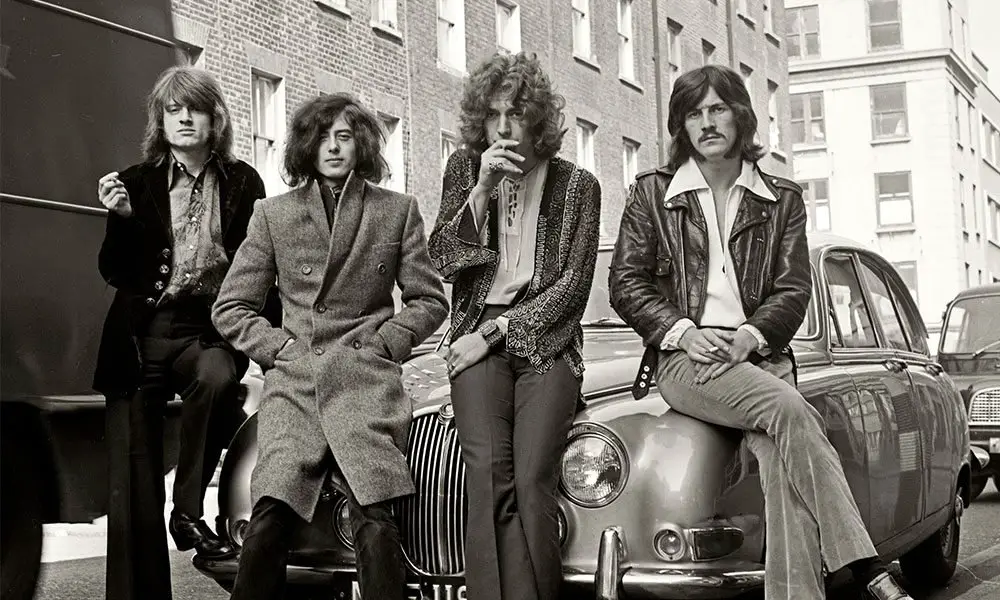Acoustic Goodness: 10 Underrated Led Zeppelin Acoustic Tracks
Led Zeppelin is best known for revolutionizing hard rock and heavy metal, crafting powerful anthems with blistering guitar solos and thunderous drum fills. But beyond their hard-hitting classics, Zeppelin had a quieter side—a side that embraced acoustic textures and lyrical introspection.
Each band member was a virtuoso, and they didn’t just prove it through volume. Their softer songs often flew under the radar but showcased just how versatile they truly were. Here are ten acoustic gems that highlight Led Zeppelin’s quieter brilliance.
10. “Friends” – Led Zeppelin III (1970)
With its eastern-inspired arrangement and hypnotic rhythm, “Friends” brings to mind Crosby, Stills, Nash & Young’s “Carry On.” The band initially wanted an Indian sound but played the parts themselves, later re-recording it with an orchestra in Bombay. Page wrote it after a heated argument, channeling emotion into composition: “I’ve just got to release this somehow.”
9. “Hey, Hey What Can I Do” – B-side of “Immigrant Song” (1970)
One of Zeppelin’s rare tracks not tied to a studio album, this fan-favorite surfaced again in their 1990 box set. It’s notable for its absence from live shows (until Page and Plant revived it in 1995) and for John Paul Jones’ multi-instrumental brilliance—he plays bass, mandolin, and acoustic guitar here.
8. “Bron-Yr-Aur” – Physical Graffiti (1975)
Clocking in at just two minutes, this instrumental is a masterclass in simplicity and emotion. Named after the Welsh cottage where it was written, “Bron-Yr-Aur” reflects the tranquility of the countryside that inspired it. “This wonderful countryside… having the guitars—it was just an automatic thing to be playing,” Page recalled.
7. “Gallows Pole” – Led Zeppelin III (1970)
A reimagined folk tune, “Gallows Pole” is dark, haunting, and musically layered. Page played banjo, six-string, twelve-string, and electric guitars, while Jones added mandolin and bass. It’s a chilling narrative about a man delaying his execution, and the build-up is absolutely riveting.
6. “The Battle of Evermore” – Led Zeppelin IV (1971)
With lyrics inspired by The Lord of the Rings, this medieval-tinged duet features Fairport Convention’s Sandy Denny—the only guest vocalist on a Zeppelin album. Plant later said, “If it suffered from naivete… it makes up for it in the cohesion of the voices and the playing.” Magical and unexpected.
5. “Black Country Woman” – Physical Graffiti (1975)
Recorded outdoors at Stargroves, this track captures the natural ambiance of the English countryside—plane flyover and all. Rather than scrap the take, the band kept it raw and real. That spontaneous spirit makes it a standout acoustic jam.
4. “Ramble On” – Led Zeppelin II (1969)
An acoustic number driven by Page’s steady strumming and mystical lyrics (yes, Tolkien again), “Ramble On” strikes a perfect balance between soft and heavy. It’s whimsical, strange, and undeniably Zeppelin—still in heavy rotation on classic rock radio.
3. “Babe I’m Gonna Leave You” – Led Zeppelin (1968)
An Anne Bredon original, reworked with Page’s flamenco-flavored fingerpicking and Plant’s impassioned vocals. The song shifts from gentle to ferocious, highlighting Zeppelin’s signature dynamic of “light and shade.”
2. “That’s the Way” – Led Zeppelin III (1970)
Another song born at Bron-Yr-Aur, originally titled “The Boy Next Door.” With its gentle guitar and intimate lyrics, it’s one of the band’s most emotionally resonant tracks. Plant said: “There was a delicacy about it, and a lot of great craft.”
1. “Going to California” – Led Zeppelin IV (1971)
This beloved ballad evolved from a tune about earthquakes into a poetic reflection of Plant’s life at 22. With mandolin, acoustic guitar, and a wistful melody, “Going to California” is perhaps the band’s finest acoustic moment—delicate, introspective, and timeless.

